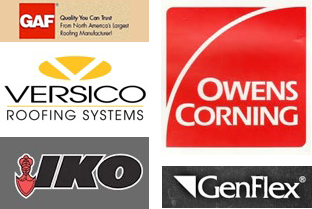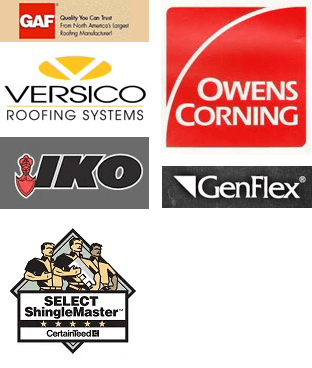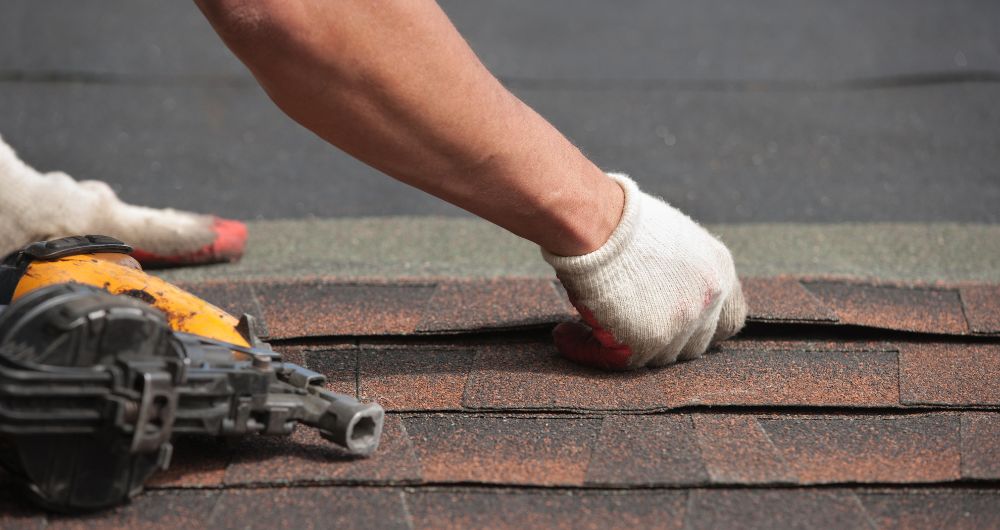
Table of Contents
Key Takeaways
Introduction
8 Reasons Why Regular Roof Maintenance is Important: Roofer Insights
Environmental Benefits of Maintaining a Roof
Scheduling and Planning for Roof Maintenance
DIY vs. Professional Maintenance by Roofers
Frequently Asked Questions
Key Takeaways✔ Investing in regular roof maintenance is a smart decision that pays dividends in terms of protection, peace of mind, and financial savings over time. ✔ Effective scheduling and planning are crucial for successful roof maintenance. Through thorough assessments, task prioritization, and detailed plans, roofers optimize resources for efficient, high-quality service delivery to clients. ✔ Maintaining a roof offers significant environmental benefits that contribute to sustainability efforts and reduce our ecological footprint ✔ DIY and professional maintenance have their advantages, depending on your circumstances and preferences. |
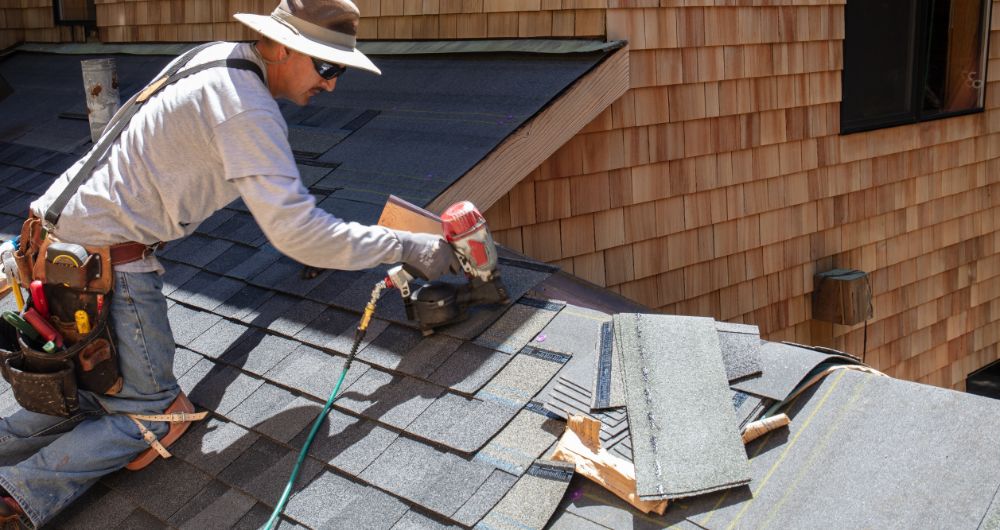
Discovering insights from experienced roofers sheds light on the paramount importance of regular roof maintenance. Their expertise reveals eight compelling reasons why proactive upkeep of roofs is beneficial and vital for homeowners and property managers alike. Here are some reasons why regular maintenance is essential:
8 Reasons Why Regular Roof Maintenance is Important
Regular roof maintenance is crucial for the longevity and performance of your building’s roof. It helps prevent minor issues from escalating into major problems, ensuring the safety and integrity of the structure while potentially saving significant costs in the long run. Here are reasons why it matters:
1. Prevents Leaks
Regular roof maintenance plays a crucial role in preventing leaks. Roofers conduct thorough inspections to identify damaged or deteriorating areas such as missing or cracked shingles, damaged flashing, or worn-out seals. Roofers in Glastonbury, CT, do tasks such as clearing debris from gutters and drains to prevent water from seeping into the structure.
2. Extends Roof Lifespan
Roofers are trained to identify early signs of wear and tear, damage from weather elements, or other issues that could compromise the roof’s structural integrity. Maintenance, including weatherproofing, helps reinforce the roof against the damaging effects of weather elements, which preserves its structural integrity. Regular upkeep ensures the roof can withstand harsh weather conditions without significant damage.
3. Preserves Property Value
A well-maintained roof enhances the overall value of a property. Additionally, roofers suggest regular maintenance to protect the structural integrity of the property.
- Curb Appeal: A well-maintained roof enhances the visual appeal of the property, making it more attractive to potential buyers or tenants. Maintaining a pristine roof adds to the property’s overall aesthetics, contributing to its curb appeal and market value.
- Structural Protection: Regular maintenance protects the property from structural damage, maintaining its value over time. Maintenance prevents leaks and structural issues, preserving the property’s value and preventing depreciation.
- Investment Protection: Maintenance safeguards the property investment by preserving its structural integrity and aesthetic appeal. This proactive approach minimizes depreciation, ultimately safeguarding the owner’s investment.
4. Saves Money
Regular roof maintenance is a cost-effective investment. It prevents the need for costly repairs or premature roof replacements. Investing in maintenance yields significant savings by avoiding future repair expenses. By maintaining the roof in good condition, property owners in Glastonbury, CT, avoid costly emergencies and enjoy long-term financial benefits.
5. Enhances Energy Efficiency
Properly maintained roofs contribute to better insulation and ventilation, enhancing energy efficiency. Roofers ensure that the roof’s insulation is intact and that no gaps or leaks could compromise energy efficiency.
- Insulation Integrity: Maintaining insulation ensures the roof retains its energy-efficient properties. Proper insulation helps regulate indoor temperatures, reducing the need for heating and cooling and lowering energy bills.
- Reflective Roofing: Installation of reflective materials or coatings improves the roof’s ability to reflect sunlight, which reduces cooling costs.
- Ventilation Optimization: Proper attic ventilation, facilitated through maintenance, helps regulate temperature and humidity levels, enhancing energy efficiency. By improving airflow, maintenance prevents moisture buildup and reduces the workload on HVAC systems.
6. Minimizes Safety Risks
Regular roof maintenance minimizes safety risks by preventing accidents caused by loose shingles, debris accumulation, or structural damage. Roofers conduct thorough inspections to identify potential safety hazards and address them promptly. This includes proactive steps to prevent accidents, such as securing loose shingles, clearing debris, reinforcing weak areas, and reducing the likelihood of safety hazards.
7. Identifies Hidden Damage
Regular roof maintenance helps identify hidden damage that may not be immediately visible. Roofers are trained to look for signs of mold, rot, or structural weaknesses that could compromise the roof’s integrity. Roofers may also employ advanced technology such as infrared thermography to detect hidden moisture or insulation issues, providing a deeper understanding of potential damage beyond what is visible to the naked eye.
8. Compliance with Warranty Requirements
Many roofing warranties require regular maintenance to remain valid. Roofers suggest investing in regular maintenance so that property owners can ensure that their roofs remain compliant with warranty requirements. In the event of a roofing issue covered by the warranty, property owners can file a claim seamlessly. This grants a sense of security, knowing that the roof’s condition is regularly monitored and cared for.
Environmental Benefits of Maintaining a Roof
Roof maintenance is often viewed as necessary to preserve a building’s structure and integrity. However, beyond its immediate benefits, maintaining a roof also offers several environmental advantages.
Preservation of Natural Resources
Regular roof maintenance extends the lifespan of roofing materials, reducing the frequency of replacements and the associated consumption of raw materials. By maximizing the longevity of roofs, maintenance helps conserve natural resources and reduces the environmental impact of manufacturing and disposing of roofing materials. Additionally, well-maintained roofs contribute to sustainable building practices by minimizing waste generation and promoting resource efficiency.
Carbon Emissions Reduction
Maintaining roofs with energy-efficient features such as reflective coatings or cool roofing materials helps reduce the demand for fossil fuel-based energy sources for heating and cooling. By lowering energy consumption, well-maintained roofs reduce greenhouse gas emissions associated with electricity generation, thus mitigating climate change. Furthermore, preserving natural resources through roof maintenance also indirectly reduces carbon emissions associated with resource extraction, manufacturing, and transportation.
Air Quality Improvement
Roof maintenance activities such as cleaning and repairing can help prevent debris, dust, and pollutants from accumulating on the roof surface. By maintaining a clean and well-kept roof, property owners contribute to improving air quality in urban areas by reducing the release of airborne particles into the atmosphere during rainfall or wind events. Additionally, reflective roofing materials or coatings can help reduce the formation of urban smog by reflecting sunlight and lowering ground-level ozone concentrations.

Scheduling and Planning for Roof Maintenance
Proper scheduling and planning ensure that roof maintenance tasks are carried out efficiently and effectively. Roofers play a crucial role in this process, utilizing their expertise to assess, plan, and execute maintenance activities. Here are critical steps involved in scheduling and planning roof maintenance, empowering roofers to deliver top-notch service to their clients:
Initial Assessment
Before scheduling roof maintenance, repair, or even replacement, roofers conduct an initial assessment of the roof’s condition. This helps identify any existing issues or areas in need of attention. Roofers typically evaluate factors such as age, materials, previous maintenance history, and weather exposure to determine the scope of maintenance required.
Establishing a Maintenance Schedule
Based on the initial assessment, roofers develop a maintenance schedule tailored to the roof’s specific needs. The schedule may include routine inspections, cleaning, repairs, and other preventative maintenance tasks. Factors such as climate, seasonality, and the type of roofing material influence the frequency and timing of maintenance activities.
Priority Identification
Roofers prioritize maintenance tasks based on the urgency and severity of issues identified during the assessment. Critical issues such as leaks or structural damage are addressed immediately to prevent further damage. Non-urgent tasks may be scheduled for a later date, depending on their impact on the roof’s integrity and functionality.
Planning Resources and Equipment
Roofers plan to ensure they have the necessary resources and equipment for maintenance tasks. This may include tools for inspections, materials for repairs, safety equipment, and access equipment such as ladders or scaffolding.
Coordination with Property Owners
Roofers coordinate with property owners to schedule maintenance at a convenient time that minimizes disruption to occupants or business operations. They communicate the scope of work, expected timeline, and any special considerations or requirements with the property owner.
Execution of Maintenance Tasks
Roofers execute maintenance tasks according to the established schedule and plan.
Tasks may include inspecting for damage, repairing leaks, replacing damaged shingles or flashing, cleaning gutters, and applying protective coatings or sealants.
Documentation and Reporting
Roofers maintain detailed records of maintenance activities, including inspection findings, repairs performed, and recommendations for future maintenance. They provide property owners with comprehensive reports summarizing the condition of the roof and any maintenance work completed.
Follow-up and Monitoring
After completing maintenance tasks, roofers may schedule follow-up inspections to ensure the effectiveness of repairs and monitor the roof’s condition over time. They may also provide recommendations for ongoing maintenance practices to preserve the roof’s integrity and prolong its lifespan.
Long-term Planning
Roofers assist property owners in developing long-term maintenance plans to ensure the continued health and longevity of the roof. This may involve scheduling regular inspections, budgeting for future repairs or replacements, and implementing preventative measures to mitigate potential issues.
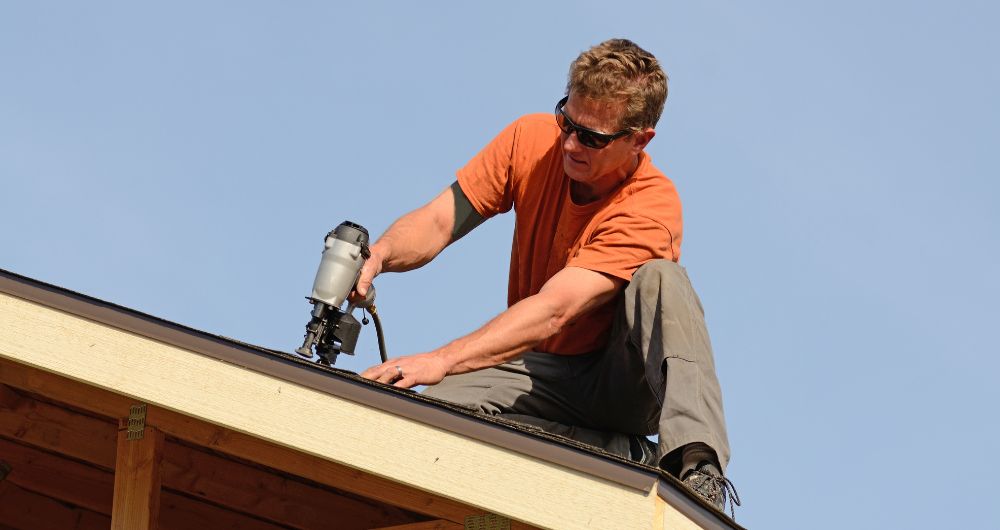
DIY vs. Professional Maintenance by Roofers
When it comes to maintaining your roof, you may be faced with the decision of whether to tackle the task yourself or hire professional roofers. Both options have their advantages and considerations, and the choice ultimately depends on factors such as your level of expertise, available time, budget, and the complexity of the maintenance required. Let’s explore the differences between DIY and professional maintenance to help you make an informed decision.
DIY Maintenance
- Cost-Effective: One of the primary advantages of DIY roof maintenance is cost savings. By performing the maintenance tasks yourself, you can avoid labor costs associated with hiring professional roofers.
- Flexibility: DIY maintenance allows you to work at your own pace and schedule, providing flexibility to address maintenance tasks when it’s convenient for you.
- Learning Experience: Taking a hands-on approach to roof maintenance can be a valuable learning experience. It allows you to familiarize yourself with your roof’s structure and components, gaining insight into its condition and potential issues.
- Immediate Attention: With DIY maintenance, you can quickly address minor issues as they arise.
Considerations for DIY Maintenance
- Safety Concerns: Working on a roof can be hazardous, especially for those without proper safety equipment or experience. DIYers should exercise caution to avoid accidents or injuries.
- Skill Level: Some roof maintenance tasks, such as repairing leaks or replacing damaged shingles, require a certain level of skill and expertise. DIYers should assess their abilities realistically and avoid tackling tasks beyond their capabilities.
- Quality of Work: While DIY maintenance can be cost-effective, the quality of work may not always match that of professional roofers. Improperly performed maintenance can lead to further damage or void warranties on roofing materials.
Professional Maintenance by Roofers
- Expertise and Experience: Professional roofers possess the knowledge, skills, and experience to perform maintenance tasks effectively and efficiently. They can identify potential issues that may go unnoticed by DIYers and provide expert solutions.
- Quality Workmanship: Hiring professional roofers ensures high-quality workmanship and adherence to industry standards. They use specialized tools, techniques, and materials to deliver superior results and prolong the lifespan of your roof.
- Safety: Professional roofers are trained in safety protocols and equipped with the necessary safety gear to work at heights safely. Hiring professionals eliminates the risk of accidents or injuries associated with DIY maintenance.
- Warranty Coverage: Many roofing manufacturers require professional installation and maintenance to maintain warranty coverage. Hiring professional roofers ensures compliance with warranty requirements, protecting your investment in roofing materials.
Considerations for Professional Maintenance
- Cost: Professional roof maintenance typically comes with a higher upfront cost compared to DIY. However, the long-term benefits of quality workmanship and warranty coverage may justify the expense.
- Scheduling: When hiring professional roofers, scheduling availability may be a consideration, especially during peak seasons or in emergencies. It’s essential to plan ahead and schedule maintenance appointments in advance.
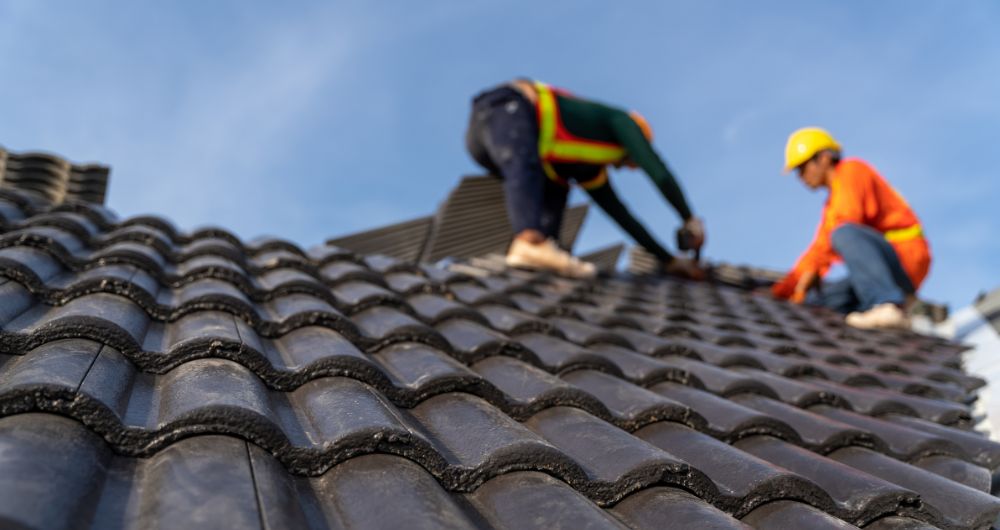
Frequently Asked Questions
How can I make my roof last longer?
Regular maintenance is key to extending the lifespan of your roof. Ensure that your roof is inspected periodically, ideally twice a year, to identify and address any issues promptly. Keep your roof clean by removing debris, leaves, and branches that can trap moisture and cause deterioration. Trim overhanging branches to prevent them from scratching or damaging the roof surface. Additionally, consider investing in high-quality roofing materials and professional installation to enhance durability and longevity.
How long are roofs suitable for?
The lifespan of a roof varies depending on factors such as the type of roofing material used, climate conditions, maintenance practices, and installation quality. Generally, asphalt shingle roofs, one of the most common types, can last anywhere from 20 to 30 years with proper care. Metal roofs and tile roofs tend to have longer lifespans, ranging from 40 to 70 years or more.
Why do roofs get damaged?
Roofs can sustain damage due to various factors, including weather exposure, age, poor maintenance, and improper installation. Harsh weather conditions such as high winds, heavy rain, snow, hail, and extreme temperatures can also cause wear and tear on roofing materials over time. Lack of maintenance, such as failure to address leaks, cracks, or missing shingles, can exacerbate damage and lead to more significant issues. Additionally, improper installation techniques or the use of substandard materials can compromise the integrity of the roof and increase susceptibility to damage.
How do you know if your roof is damaged?
There are several signs to look for to determine if your roof is damaged. These include visible signs of wear and tear such as cracked, curled, or missing shingles, as well as leaks or water stains on the ceiling or walls inside the building. Other indicators of roof damage may include sagging or uneven areas on the roof surface, damaged flashing or sealant around vents and chimneys, and excessive granule loss from asphalt shingles.
How often should you schedule roof maintenance inspections?
As a general guideline, it is recommended to schedule roof maintenance inspections at least once a year. However, the frequency of scheduling roof maintenance inspections depends on several factors, including the age of the roof, the local climate, the type of roofing materials used, and any previous issues or repairs. Also, in regions with harsh weather conditions or where roofs are prone to damage, more frequent inspections may be necessary, such as every six months or even quarterly.
Ensure Your Roof’s Longevity Today!
Discover the paramount importance of regular roof maintenance straight from the experts at Morrissey Construction in Glastonbury, CT. With our wealth of experience and insights, you’ll gain invaluable knowledge on safeguarding your property investment. Don’t wait until it’s too late – take proactive steps to protect your roof’s integrity and extend its lifespan. Contact Morrissey Construction now to schedule your consultation and secure peace of mind for years to come!

